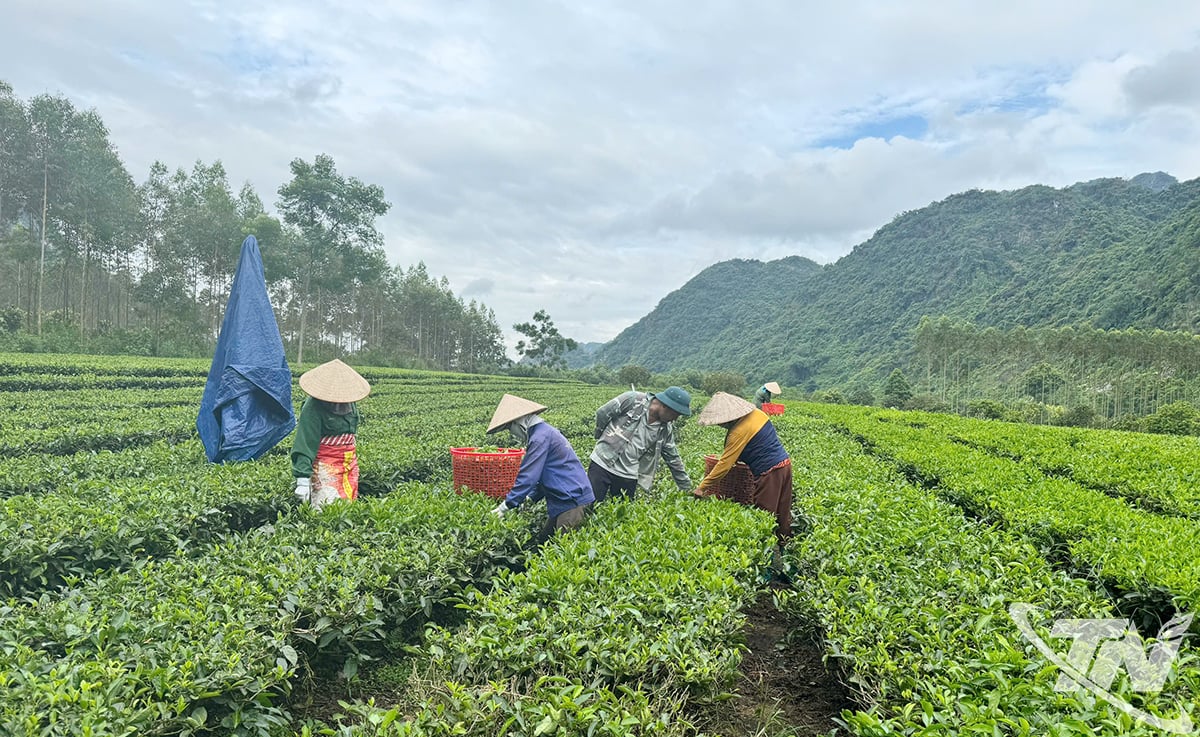 |
| Thai Nguyen people harvest tea in the fall. |
Distinctive flavor
For tea connoisseurs, each season, the flavor of Thai Nguyen tea buds has its own characteristics. If in spring (March and April), the flavor of the first tea crop of the year is likened to love at the beginning of its blossoming, with a little sweetness, a little astringency and a little fat, then in summer (from May to July), the flavor of tea is extremely attractive. Considered the main tea crop, when the tea leaves mature in both quality and quantity, the flavor of summer tea is considered the most quintessential of the year, a blend of sweetness and a very fresh feeling.
The flavor of autumn tea, harvested from August to October, has a special charm. Thai Nguyen is entering autumn, the season of the most beautiful tea fields of the year with cool, gentle weather; golden sunlight like pouring honey.
Different from the green color of summer, in autumn, the leaves turn darker, which means that the tea buds, when processed, will have a very unique astringent taste, creating pots of tea with a rich flavor.
Mr. La Anh, a lover of Thai Nguyen tea, currently living in Hue Street ( Hanoi ) said: I have been "addicted" to Thai Nguyen tea for more than 20 years. I have drunk all kinds of tea from spring, summer to autumn, winter, but I still love the feeling of coming to Thai Nguyen tea region in autumn, in the gentle cold, with a few close friends, enjoying the scenery and chatting over a cup of hot tea. Enjoying fragrant tea right in the middle of the tea region, I feel that each sip of sweet tea stays in my throat, each story shared with friends is more intimate and affectionate...
In just a few days, the autumn tea season will end to make way for the winter tea production cycle. Although it is the least harvested time of the year, this tea season develops more slowly than previous seasons, but the flavor is sweet and warm.
With a small quantity, winter tea is highly appreciated for its quality. Along with autumn tea, winter tea is the harvest to serve the needs of consumers during the Lunar New Year. The value of autumn-winter tea can be one and a half to double that of the main season tea. Therefore, Thai Nguyen people invest a lot of effort in the tea crops at the end of the year.
Science and technology "cover" the tea region
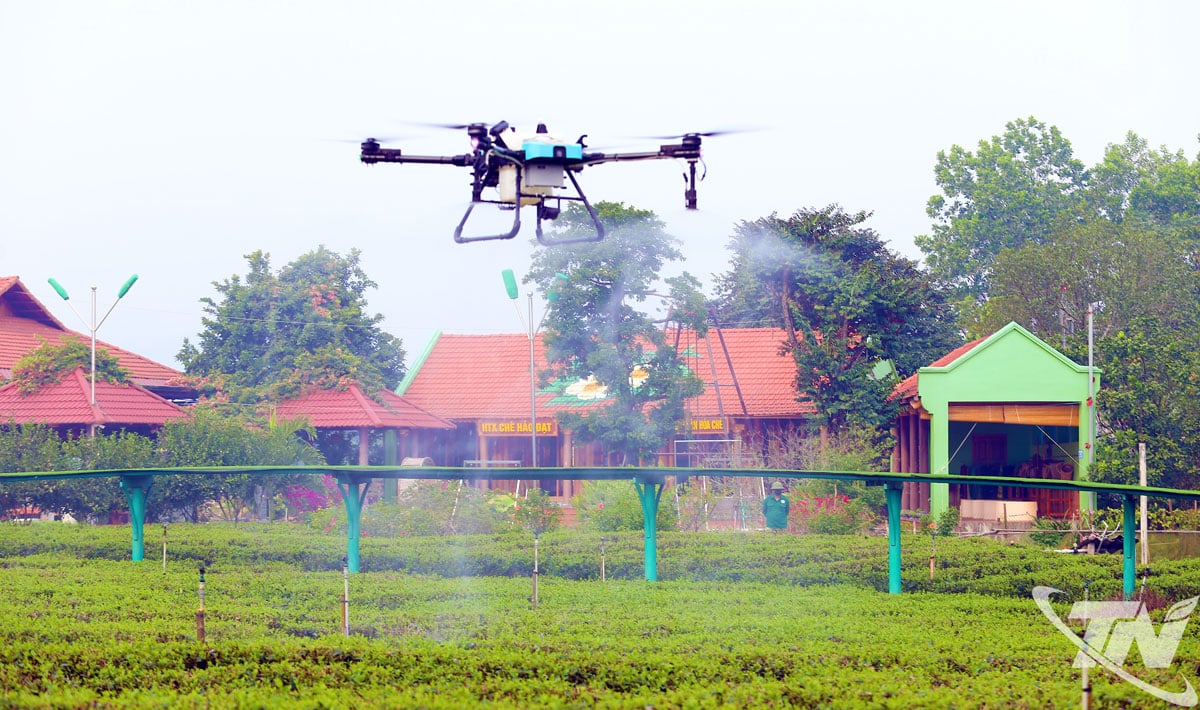 |
| Using drones to take care of tea plants at Hao Dat Tea Cooperative. Photo: TL |
In Thailand, science and technology have “covered” the tea growing areas. This is the explanation why, whether in the dry weather of autumn or in the cold frosty days of winter, the tea buds still “wake up”, green and eye-catching.
Thai Nguyen tea growers share that water is the key factor determining tea productivity and yield. In spring, light drizzle helps the tea fields sprout, grow, and produce fresh buds. Summer is the time when rainfall is most abundant in the year, so the tea grows green and produces high yields. In autumn, the rain gradually decreases, but the tea fields still do not have to suffer from thirst. Only in winter is the time when the tea fields need irrigation water.
Mr. Pham Van Nhat, one of the long-time tea producers in Tan Cuong, said: In winter, there is little rain and a lot of cold, while tea plants require high humidity to grow and develop. Therefore, most tea growers in Tan Cuong have proactively drilled wells to have water to irrigate the tea regularly. On dry days, water brings freshness to the tea fields. On cold, frosty days, water drives away the cold so that the tea plants can sprout green buds...
Along with investing in wells, people in the Thai tea region have boldly invested in automatic and semi-automatic controlled irrigation systems, which not only reduce labor but also help the tea gardens always have enough water.
Next to the lush green tea fields, Mr. Nguyen Thanh Nam, Van Han commune happily boasted: We installed an automatic rotary valve irrigation system on the tea hills, which is the optimal choice for clean tea production, using organic fertilizers and biological pesticides. Science and technology are the arrow that hits many targets to make tea production more and more effective.
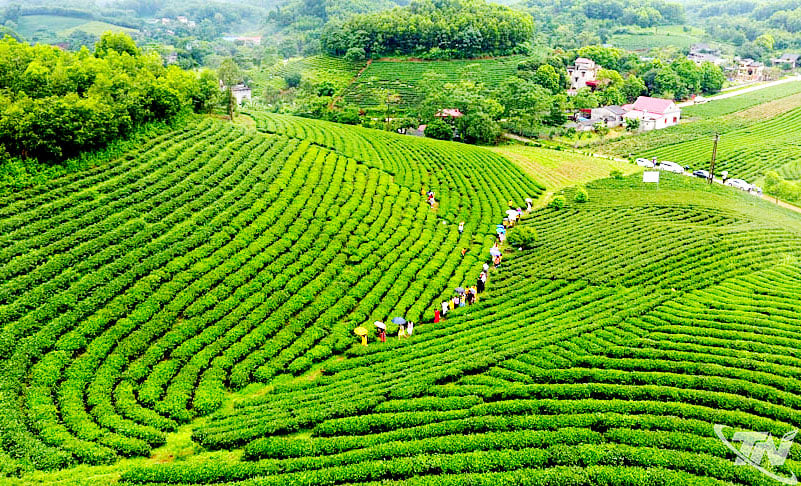 |
| Tea trees not only bring a prosperous life to Thai Nguyen people, but also create beautiful natural landscapes, attracting tourists. Photo: TL |
In many places, after the rice harvest, instead of burning it to pollute the environment, many households bring the straw back home to store. When the dry season comes, the straw is taken out and covered on the surface of the tea beds to keep them moist and limit water evaporation. The tea fields are therefore always green during the dry and cold days.
Thanks to the application of science and technology, Thai Nguyen has produced all tea crops in the year, contributing to increasing productivity and tea output each year. In the first 6 months of the year alone, Thai Nguyen tea output reached nearly 150 thousand tons of fresh tea buds, about 10 to 15% higher than the same period last year. It is worth mentioning that new tea varieties with high productivity and quality have "spread" over the province's tea fields (currently reaching over 80%); the area of tea meeting organic and GAP standards is about 5%...
In the process of applying science and technology to production, Thai Nguyen is continuing to expand the tea area, shifting the structure of new planting varieties, replacing them with high-yield and high-quality varieties, increasing product value and food safety. In particular, the province has set a target that by 2030, the tea area applying GAP and organic standards will account for the majority, with 70% of the area. At the same time, it will continue to form a tea production area focusing on applying technical advances and high technology in tea production and processing.
Source: https://baothainguyen.vn/kinh-te/202510/huong-che-thom-ngat-bon-mua-b9c5004/


![[Photo] Award Ceremony of the Political Contest on Protecting the Party's Ideological Foundation](https://vphoto.vietnam.vn/thumb/1200x675/vietnam/resource/IMAGE/2025/10/22/1761151665557_giaia-jpg.webp)
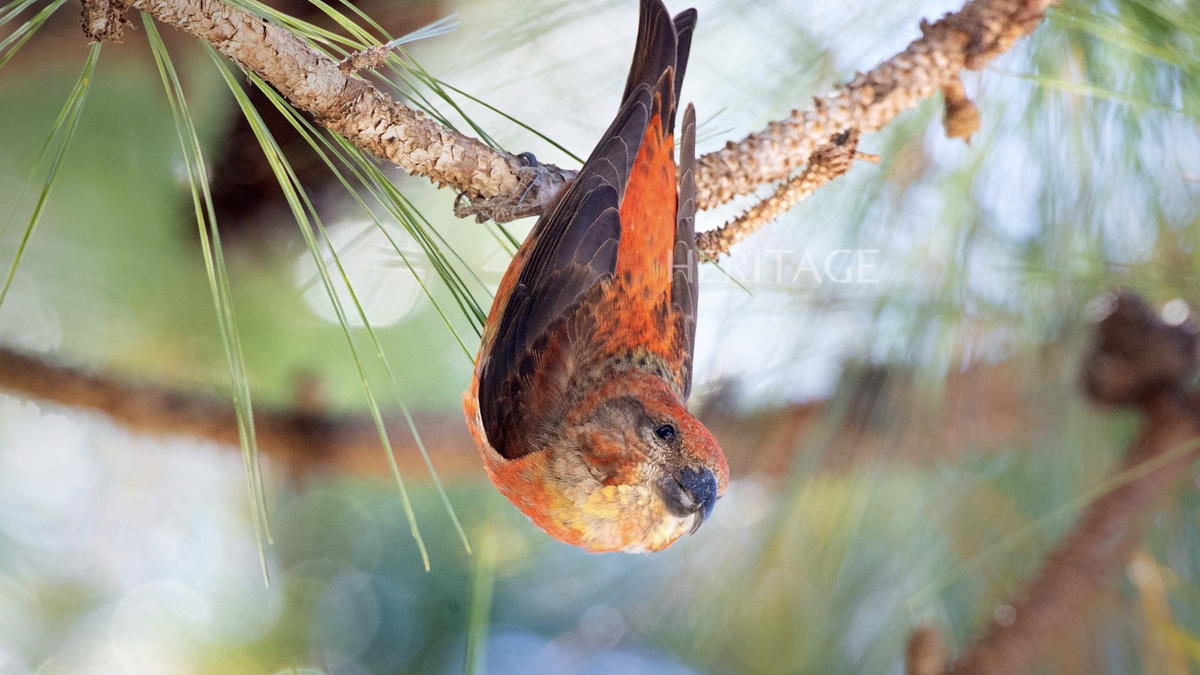
![[Photo] Prime Minister Pham Minh Chinh chairs meeting on nuclear power plant construction](https://vphoto.vietnam.vn/thumb/1200x675/vietnam/resource/IMAGE/2025/10/22/1761137852450_dsc-9299-jpg.webp)
![[Photo] Da Nang: Shock forces protect people's lives and property from natural disasters](https://vphoto.vietnam.vn/thumb/1200x675/vietnam/resource/IMAGE/2025/10/22/1761145662726_ndo_tr_z7144555003331-7912dd3d47479764c3df11043a705f22-3095-jpg.webp)










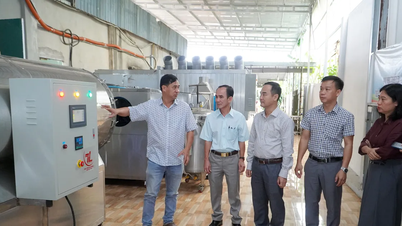



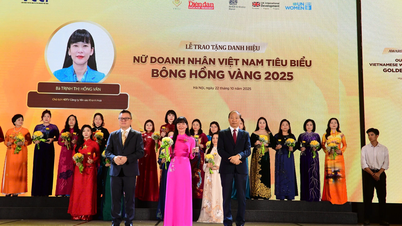













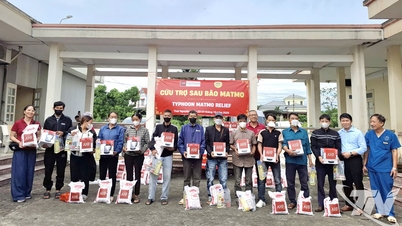


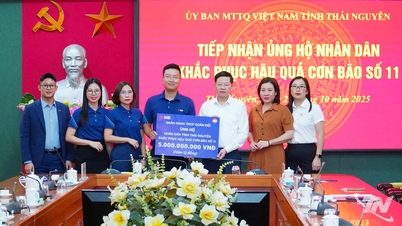
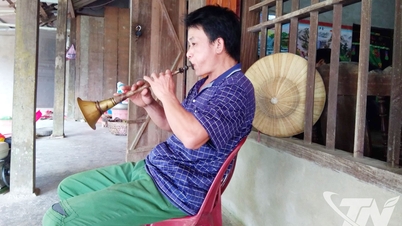



















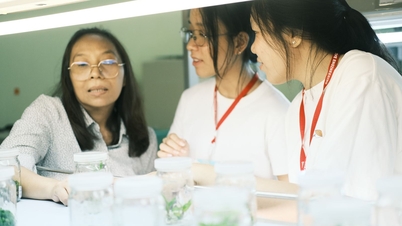



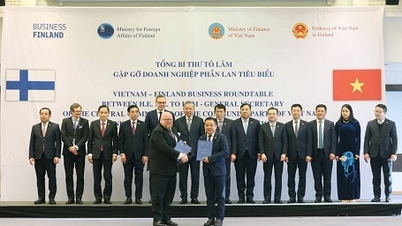
















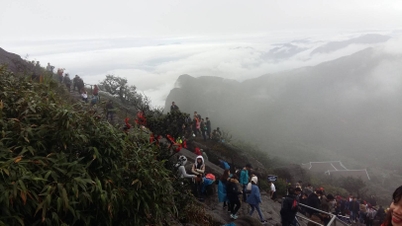




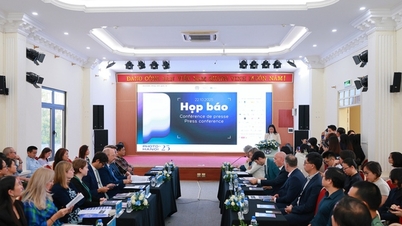

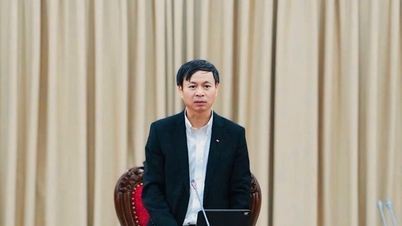
















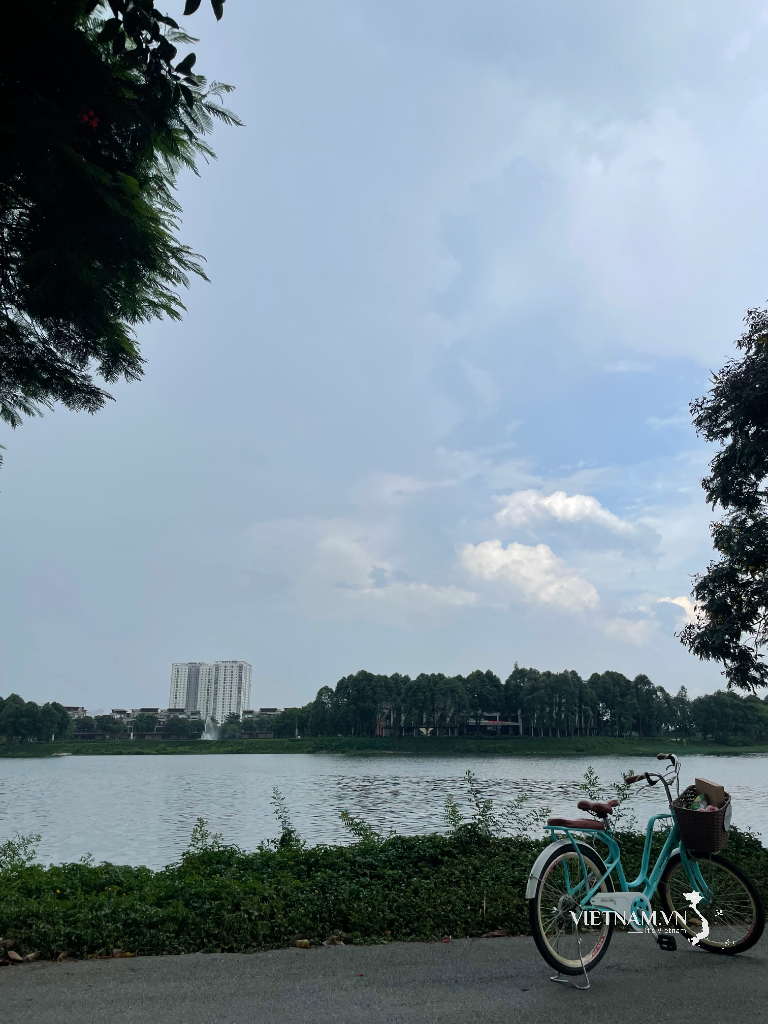

Comment (0)